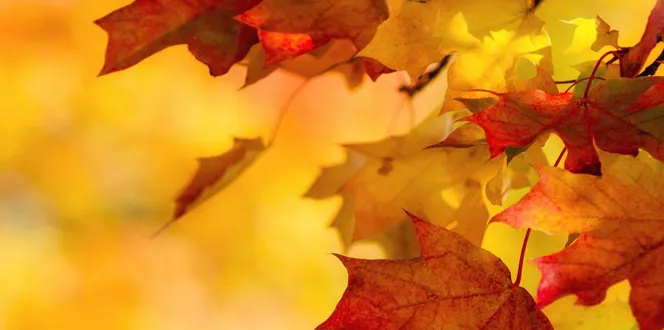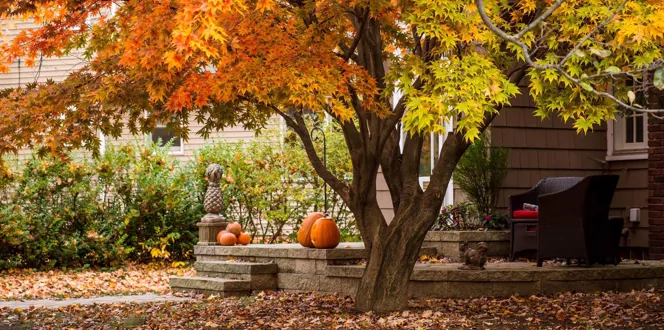For parts of the country with cooling temperatures and large populations of deciduous trees, The Fall season provides some wonderful scenery. Green leaves give way to a colorful natural skyline with hues of reds, yellows, oranges, and browns.
But What Gives Leaves Their Fall Foliage?
The answer can be found in four pigments:
- Chlorophyll
- Carotenoids
- Anthocyanins
- Tannins
Present throughout the year, chlorophyll gives leaves their green color during the growing season. It is essential to the production of carbohydrates through photosynthesis. Another pigment is also present during the growing season: carotenoids. During the spring and summer, however, high chlorophyll levels overpower carotenoids, and leaves stay green.
In this video, we cover why leaves change color in the fall and the science behind it!
What Causes Leaf Color Change?
While remaining present, chlorophyll levels dip in the fall, allowing carotenoids to become more visible. This gives leaves their yellow color. Red color in leaves is the product of anthocyanins. As you might have deduced, orange leaves are created by the presence of both carotenoids and anthocyanins.
A pigment not found in most trees during the growing season, anthocyanins develop with cooler nighttime temperatures. Paired with ideal weather conditions, anthocyanins play a large role in creating more intense fall foliage. A combination of temperatures between 32-45 degrees F at night and bright sunny days are peak conditions for trapping sugars in leaves, allowing anthocyanins to develop and enhance color.
The fourth pigments, tannins, typically are found in oak trees, giving leaves a dull brown color. Oaks that have been fertilized show more of a red color before tannins fully develop. Tannins are present in varying concentrations during the growing season.
Temperature, light, and water supply can dictate the brightness and duration of fall foliage. Low temperature above freezing favors anthocyanin formation, while early frost weakens the red color. Rainy and overcast days can increase the intensity of leaf color change.
Color Isn’t The Only Element Changing In Leaves During The Fall
A special layer of cells develops and gradually severs the point where the stem of a leaf is attached to a tree. At the same time, the tree seals the cut so when the leaf is blown away or falls, it leaves behind a leaf scar.
The best time to enjoy fall foliage is on a clear, dry, and cool day.





